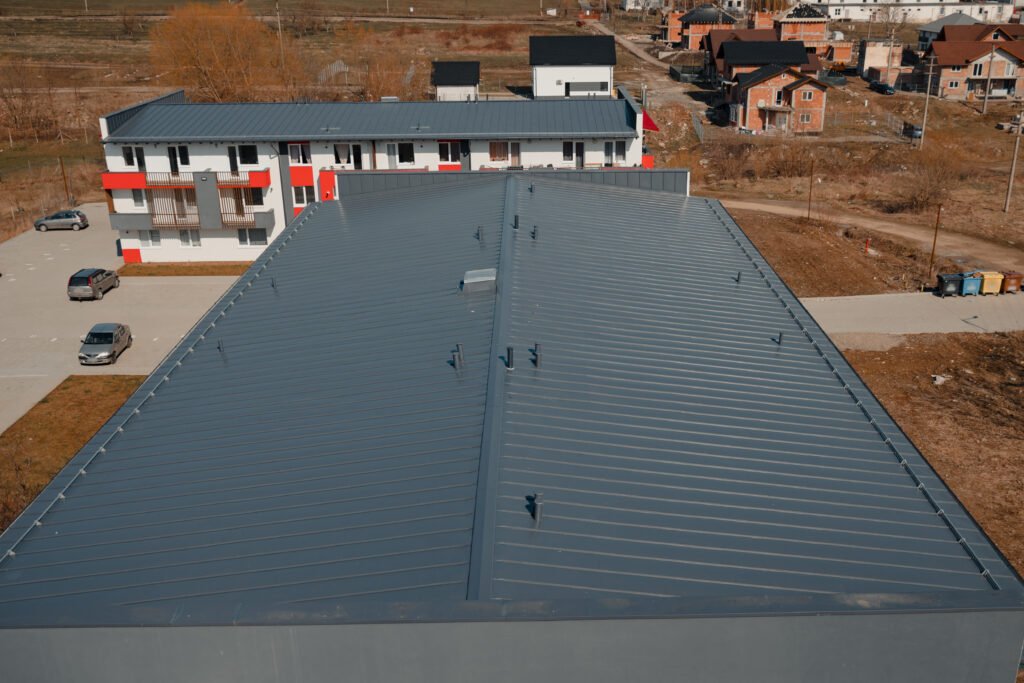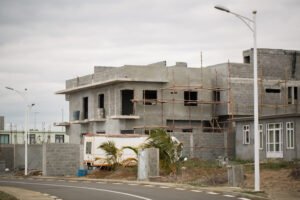Every house has a rooftop that is exposed to environment which includes heat from sun and water from rains. With time and global warming in effect, summer temperatures specially in urban areas & intensity of rains are changing. This change in weather and environment also demands various steps and methods to be implemented during construction of house for minimising the negative effect of external weather. More temperature inside house demands more air conditioning appliances hence more electricity bills. Similarly poorly water proofed roofs can cause water leakages damaging paint of house. Hence during constructing grey structure of a house, certain measures are taken to protect the house from said problems. In this article we will explain standard heat proofing and water proofing house roof techniques.
Water proofing
Water proofing is one of the last steps and procedures carried out during grey structure construction of a house. And it is one of the most critical steps that involves technicalities to be followed for saving the roofs completely from leakages. There is a standard procedure adopted in lower and central punjab that involves following steps:
- Cleaning and removing debris from concrete slab roof
- Cement paste coating (Neeru)/Bitumen coating
- Laying single layer polythene sheet
- Mud and husk layer in slope (6 inches maximum and 3 inches minimum)
- Cement sand 1:8 dry mortar
- Laying & fixing good quality brick tile (9 inches x 4.5 inches x 1.5 inches)
- Cement coating on brick tiles filling all grooves and joints completeley
- Protecting corners all sides by making round edges (gola) with cement sand mortar.

A typical roof in brick tiles process
There is a standard procedure adopted in upper punjab, KPK & Islamabad regions that involves following steps:
- Cleaning and removing debris from concrete slab roof
- Cement paste coating (Neeru)/Bitumen coating/Chemical coating
- PCC 1:3:6
- Laying & fixing good quality marble/or preparing whole roof in chips terrazo floor
- Protecting corners all sides by fixing skirtings.
A typical roof undergoing chips treatment
Though this procedure is being adopted and practiced successfully for years, still there is room for improvement and making the roofs more secure. Step 3 that involves neeru coating or bitumen, can be replaced by much more protective and durable chemical coating layers. There are various water proofing chemicals available in market that are made specially for protecting the roofs however in our recommendation Ultra chemicals’s product named “Ultra Seal roof” is best among all. It is protective coating that sets instantly once applied & provides strong waterproofed surface. Unlike Neeru or bitumen, this chemical doesn’t get affected by sun light and other environmental pollutions. It is a water-based chemical that requires no flame or heaters for application as compared to other rolled roofing membranes.
This chemical should be applied to dry surface that is free of debris, dirt, oil and other greasy components. Weather predictions should be followed constantly before applying this chemical as at the time of application weather should be completely clear for at least 24 hours. Chemical is applied with a roller brush and surface area covered per litre depends upon the thickness of coating. Required durability is achieved in minimum 2 chemical coats. Chemical should be applied under the supervision of professional that must make sure there are no open pores left on concrete slab and along the parapet joints. Chemical should also be applied vertically up to 1 ft on parapet walls.
Heat proofing
Heat proofing is the procedure that is carried out during water proofing. As it is stated in steps above that mud is used in slopes, purpose of placing this mud on roof is in fact protecting heat from travelling to concrete slab. As we all know that mud is a natural insulator and heat doesn’t travel through mud. Though mud is the best natural insulator, still there are now various heat proofing products available in market that people use to protect their houses more from getting heated up in summers. Most commonly and widely used products are:
- Jumbolon boards
- Thermopor sheets
These jumbolon boards/sheets are available in thicknesses of 1.5 inches, 2 inches and 3 inches. Manufacturers make same sheets in two qualities. Superior quality jumbolon boards are made in imported 142D gas whereas lower quality sheets are made in local LPG. Both qualities have same compressive strength & density however only difference is that the one made in 142D gas has much more life than the one made in LPG gas. Thermorpor sheets are not recommended for heat proofing of roofs due to its lower density and compressive strength. Thermopor sheets are more widely used in cavity walls.
Incase you are willing to use these boards, steps involved in water and heat proofing will be as follows:
- Cleaning and removing debris from concrete slab roof
- Cement paste coating (Neeru)/Bitumen coating
- Laying single layer polythene sheet
- Laying jumbolon/thermopor boards
- Laying single layer polythene sheet again
- Mud and husk layer in slope (6 inches maximum and 3 inches minimum)
- Cement sand 1:8 dry mortar
- Laying & fixing good quality brick tile (9 inches x 4.5 inches x 1.5 inches)
- Cement coating on brick tiles filling all grooves and joints completeley
- Protecting corners all sides by making round edges (gola) with cement sand mortar.
Incase you are constructing your house in regions where mud and brick tiles are not recommended, steps involved in water and heat proofing will be as follows:
- Cleaning and removing debris from concrete slab roof
- Cement paste coating (Neeru)/Bitumen coating/Chemical coating
- Laying jumbolon/thermopor boards
- PCC 1:2:4
- Laying & fixing good quality marble/or preparing whole roof in chips terrazo floor
- Protecting corners all sides by fixing skirtings.
Though the companies manufacturing heat proofing boards claim best heat resisting results, however it is still debatable. Heat travel inside our houses not only through the roofs, also the sun facing walls and windows. In fact more heat is transferred through walls and windows. Heat proofing of roof is maximum effective only if walls are also heat proofed using cavity methods and windows are fixed in double glazed fittings with heat proofing feature.




